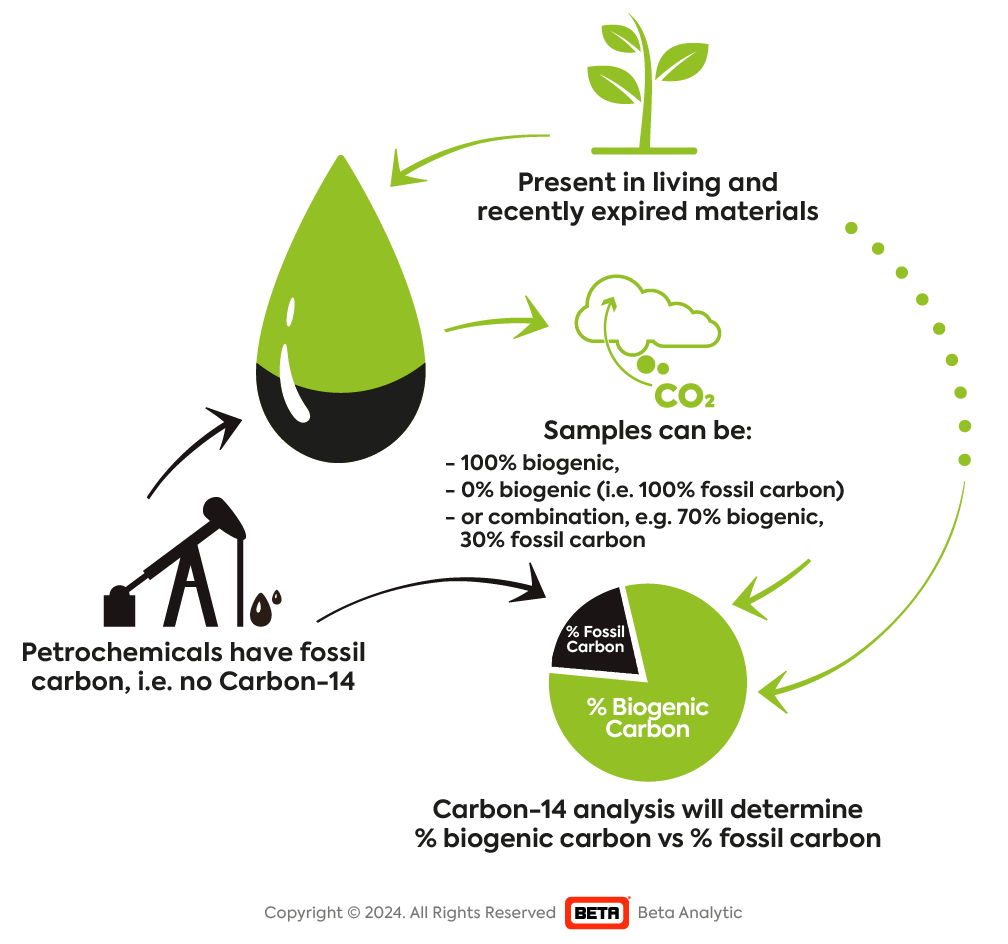Measuring % Biogenic Carbon versus % Fossil Carbon in carbon dioxide emissions
Biogenic carbon testing uses Carbon-14 technology to determine the biomass-based vs. fossil fraction of stack gas carbon dioxide (CO2). Since carbon-14 is only present in living or recently expired material, Carbon-14 testing using Accelerator Mass Spectrometry (AMS) is the most effective method to determine the percentage of biogenic vs. fossil-derived carbon in the total emitted CO2 from exhaust gases of stationary sources. This test is particularly useful to energy-intensive industries since Carbon-14 analysis of their CO2 emissions overcomes representativity issues arising from sampling heterogeneous waste-derived fuels.
What does “biogenic” mean?
Biogenic is defined by the ASTM D6866-22 analytical standard as containing carbon (organic and inorganic) of renewable origin like agricultural, plant, animal, fungi, microorganisms, macroorganisms, marine, or forestry materials.

For reliable, accurate and fast biogenic testing solutions, choose Beta Analytic.
What is Carbon-Neutral CO2?
US EPA Mandatory Reporting Rule endorses ASTM D6866 testing
EN ISO 21644 testing under the European Union Greenhouse Gas Emissions Trading Scheme
Page last updated: January 2024